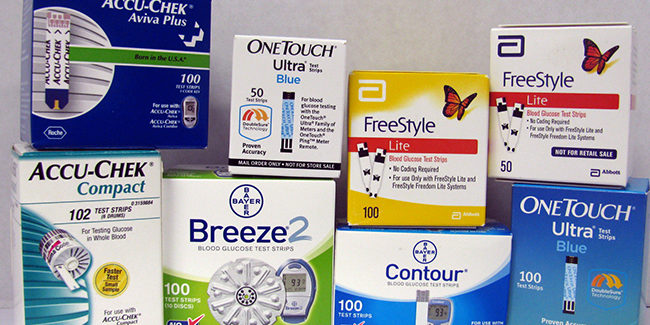For those of us who work daily with diabetic test strips, it may come as a surprise that diabetic test strips have been available in the marketplace for barely 30 years.
Companies like Test Strip Search have been buying diabetic test strips in order to make sure they are available to diabetics across the US.
The history of patient driven diabetes management is relatively short. Just 40 years ago, being diagnosed with diabetes could easily be a death sentence as doctors and scientists alike were struggling to find out the science behind blood glucose, insulin and diabetes. The idea of testing your blood for glucose with a simple finger prick and a magical diabetic strip was still years away.
Thankfully, we have made a lot of strides in the management of diabetes in the past 40 years.
Some of our older diabetics may recall a time when glucose was measured in the urine and at the doctors office only. Insulin was given sporadically if at all. Scientists, researchers and doctors had many theories about how to manage diabetics, but until we could bring glucose testing into the daily lives of diabetics, little could be done.
Scientists realized as early as the 1800’s that glucose in the urine was related to diabetes and commercialization of urine testing for glucose was started. The process of testing urine for glucose, however, was somewhat cumbersome. In 1945 Clinitest was introduced (from Ames in Elkhart, Indiana) and a modified copper reagent tablet could be used to figure out how much glucose was in a person’s urine.
In 1965 Ames went on to develop the first blood glucose test strip. It involved a large drop of blood, 60 seconds and a color chart. This early strip was used at the doctor’s office and not by individuals at home.
In the 1970’s the first at-home meter to test blood glucose was introduced and it was, at first, clunky and inaccurate. The concept of blood glucose relating to health was still new and untested and doctors and patients alike were anxious to see what the science of self care with diabetes would reveal.
During the 1980’s meters and diabetic test strips requiring less blood became available and self-monitoring of blood glucose (SMBG) was starting to be the standard of care. Finally, folks could use diabetic test strips easily at home! This made it possible to study the results of this care in the Diabetes Control and Complications Trial which positively answered many questions about the relationship between blood sugar control and diabetes complications.
Throughout the 1980’s, 1990’s and early 2000’s SMBG technology continued to improve. The amount of blood needed continued to decrease and electrochemical strips were developed. These electrochemical strips are very similar to the diabetic test strips we see today.
By 2010 SMBG was practically pain-free and tracking blood sugar was recommended for most diabetics. Diabetics could easily buy diabetic test strips at drugstores across the country.
The business of reselling diabetic test strips probably began in the early 2000’s as well.
Companies like Test Strip Search saw that many patients were getting more test strips than they could use and other patients were unable to afford the high price of diabetic test strips. These companies emerged to redistribute unneeded diabetic test strips and get them out to uninsured and under-insured individuals.
This evolution of home monitoring has continued with continuous glucose monitoring (CGM), which was approved in 1999 for professional use. The initial CGM’s were not a success due to site irritation, but companies went to work looking at ways to make the blood glucose technology even more simple. All of the early CGM devices required blood glucose confirmation in order to make any insulin decisions.
In 2015 Dexcom introduced the G5 Mobile which allows data to be transmitted to a cell phone. Abbott also introduced a CGM called the FreeStyle Libre Pro in 2016. This Libre is the first CGM that required no fingerstick testing during its wear.
Test Strip Search buys continuous glucose monitors as well as diabetic test strips. We are in the business of making sure diabetic supplies are affordable for all individuals as they manage their diabetes.
The evolution of diabetes management has been quick and has benefited millions of individuals. Clunky urine tests evolved to simple blood tests and, just recently, we have the emergence of continuous glucose monitoring. It will be interesting to see how much easier blood glucose monitoring will be in the future.
The goal of Test Strip Search is to make sure all the diabetic monitoring devices get used and that diabetic everywhere have access to the products they need.
Please consider selling diabetic supplies you don’t need to Test Strip Search to make sure they get into the hands of diabetics who can use them.
Reference: Professional Diabetes Organization









